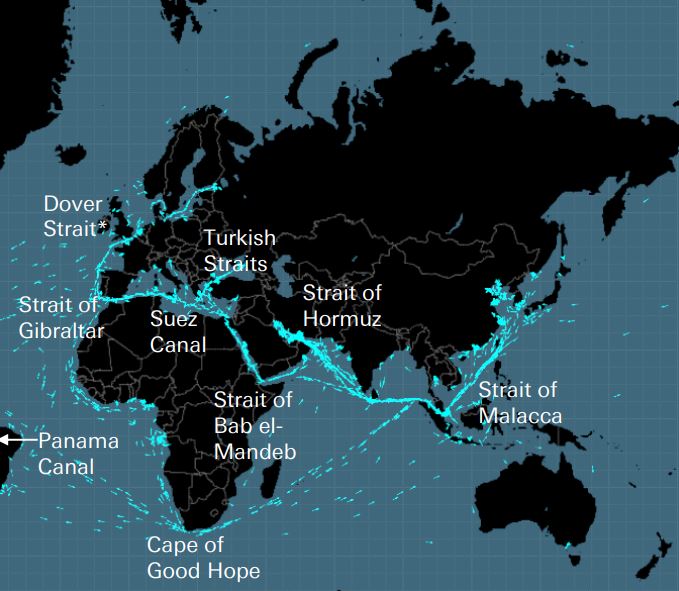
Kabel, jaringan pipa, jalan raya, selat laut, jalur udara dan satelit membentuk jaringan rapuh yang menjadi landasan perekonomian global. Ini adalah jaringan tak terlihat yang sangat penting bagi rantai pasokan global dan kehidupan modern, namun hanya diingat ketika perang seperti yang terjadi di Ukraina atau Israel mengancam salah satu titik strategis tersebut. Studi Deutsche Bank menyoroti lima mata rantai lemah dalam perekonomian global. Artinya, infrastruktur yang tidak dapat digantikan oleh alternatif lain sehingga dapat menghambat rantai pasokan global.
Ada beberapa kerentanan dalam ekonomi global yang kurang lebih diketahui semua orang, seperti pabrik semikonduktor Taiwan, pusat keuangan global, dan 0,5% stasiun kereta bawah tanah di London dan Paris yang dapat memblokir setengah jaringan.
Namun, ada juga jaringan yang tak kasat mata namun sangat penting, seperti yang ditunjukkan oleh kerusakan yang terjadi pada pipa gas bawah laut dan kabel telekomunikasi antara Finlandia dan Estonia pada 10 Oktober, yang mengingatkan pada sabotase pipa Nord Stream setahun yang lalu. Pada tahun 2010, letusan gunung berapi di Islandia "menghentikan" lalu lintas udara Eropa selama satu detik selama 8 hari, catat Deutsche Bank.
Baik Ukraina maupun Israel terletak dekat dengan titik-titik penting bagi perekonomian global.
– Kabel data: Hingga 99% komunikasi digital dunia serta 10 triliun dolar transaksi keuangan, melewati kabel serat optik yang terletak di dasar laut. Terdapat sekitar 550 kabel aktif dan yang direncanakan, membentang sepanjang 1,4 juta kilometer. Banyak di antaranya yang hanya setebal kaleng penyiram, jelas Deutsche Bank. Kabel-kabel ini rentan terhadap spionase, sabotase, dan kerusakan yang tidak disengaja.
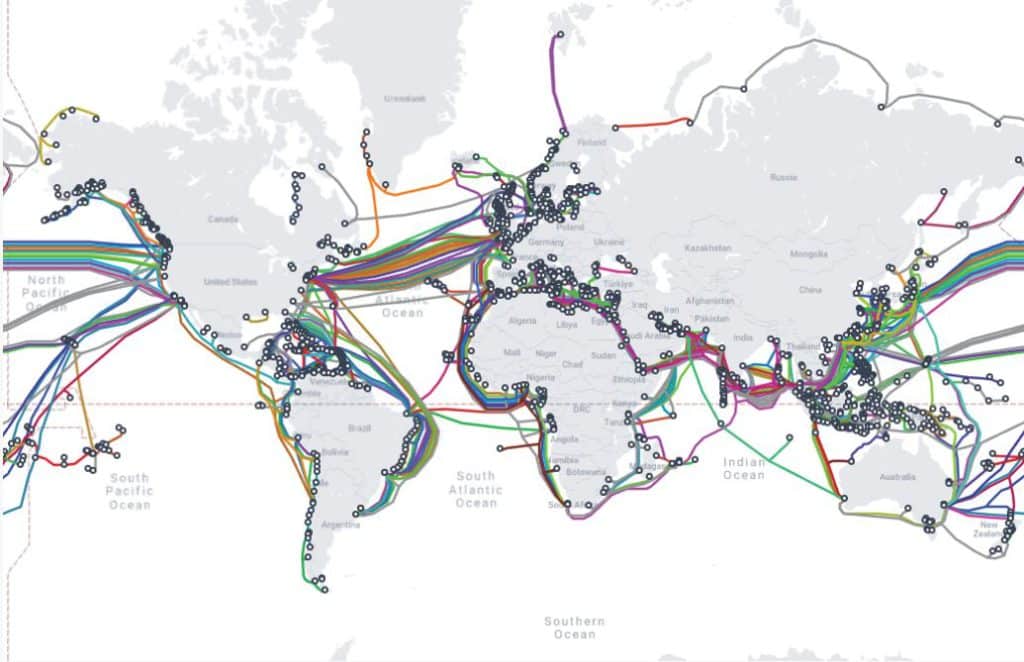
– Kabel listrik bawah laut: Interkonektor listrik memungkinkan negara-negara membeli tenaga angin atau surya yang lebih murah dari negara-negara tetangga mereka yang memiliki cuaca lebih baik, meningkatkan keamanan pasokan, dan mengelola permintaan dengan lebih baik. Namun, mereka dapat dihancurkan karena sabotase atau kecelakaan.
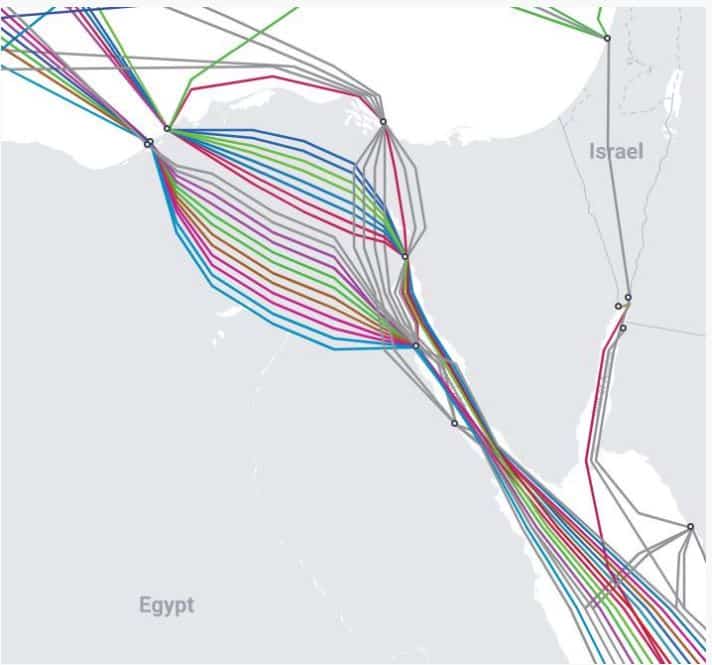
– Jaringan pipa gas alam: Eropa bergantung pada jaringan pipa untuk sebagian besar pasokan gas alamnya. Pada tahun 2020, mereka mengimpor hampir 40% gas alamnya dari Rusia, dan sejak itu, mereka harus bergantung pada jaringan pipa dari Norwegia dan mengimpor LNG. Seperti yang ditunjukkan oleh ledakan di Nord Stream, jaringan pipa ini rentan terhadap sabotase.
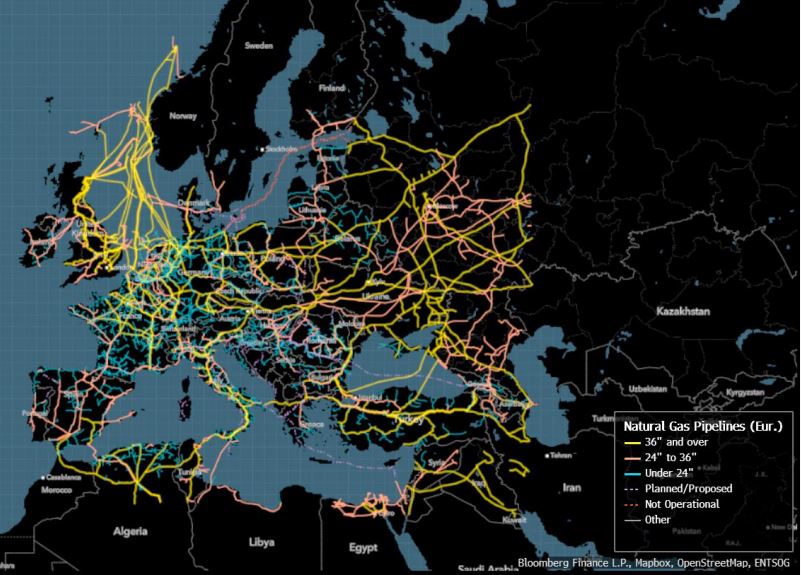
– Saluran pipa minyak: Sebagian besar jaringan pipa minyak dunia terletak di Eropa dan Asia, dan bermula dari Rusia. Pipa minyak pada umumnya berdiameter sekitar 50 sentimeter dan dapat mengalirkan lebih dari 1 juta liter (atau 6.300 barel per jam). Sebagai perbandingan, satu barel dapat mengalirkan kurang dari 200 barel sekaligus. Pipa-pipa ini terbuat dari baja dan, jika memungkinkan, ditanam di dalam tanah. Seperti pipa gas alam, pipa-pipa ini rentan terhadap kerusakan, gempa bumi, dan sabotase.
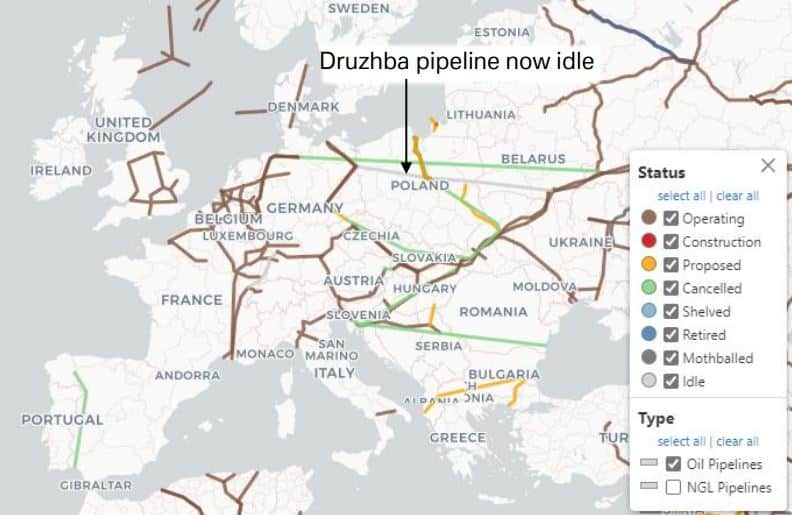
Beberapa jalur kereta api dan jalan raya di tempat-tempat terpencil mengangkut pasokan penting bagi perekonomian global dalam jumlah yang sangat besar, tanpa alternatif. Wilayah yang luas di Kongo dan Zambia, misalnya, merupakan produsen tembaga terbesar di Afrika dan menyumbang dua pertiga produksi kobalt dunia. Namun, hanya ada empat jalan, semuanya rusak dan macet, untuk mengangkut bahan baku ini dari tambang ke pelabuhan di Namibia, Afrika Selatan, Mozambik, dan Tanzania. Hal serupa juga terjadi pada kedelai Brasil, yang merupakan eksportir nomor 1 dunia. Dalam dua tahun terakhir, kekeringan telah melanda sungai-sungai yang merupakan jalur air vital, menunjukkan betapa rentannya transportasi ini.
Selain Tanjung Harapan, terdapat 8 "selat" penting untuk transportasi laut. Sebagaimana dijelaskan Deutsche Bank, kelima selat ini merupakan "kunci yang membuka dunia" bagi Kekaisaran Inggris, jika Selat Dover dihilangkan dan Terusan Panama, Selat Turki, Selat Bab el-Madeb, dan Selat Hormuz ditambahkan. Dalam hal minyak, misalnya, lebih dari 60% pasokan diangkut melalui laut, dengan Selat Hormuz menjadi titik terpenting bagi pasar, karena seperlima konsumsi dunia (dan sepertiga LNG) melewatinya. Pada titik tersempitnya, Selat Hormuz hanya selebar 33 kilometer.

Selat-selat ini rentan terhadap blokade, tabrakan atau kandasnya kapal, bajak laut, serangan teroris, perang dan kecelakaan seperti tumpahan minyak.
Transportasi udara bergantung pada jaringan koridor tak kasat mata yang dapat terganggu oleh cuaca, perang, atau peristiwa tak terduga, seperti ketika wilayah udara Spanyol ditutup November lalu untuk memungkinkan rudal Tiongkok memasuki atmosfer Bumi. Pemogokan oleh pengendali lalu lintas udara telah menyebabkan masalah transportasi besar di Eropa tahun ini, sementara blokade lalu lintas udara terbesar pascaperang terjadi pada tahun 2010, ketika gunung berapi di Islandia meletus.
Dunia sangat bergantung pada Sistem Pemosisian Global (GPS) AS. Sistem ini menggunakan sekitar 30 satelit Pemosisian, Navigasi, dan Penentuan Waktu (PNT) yang mengorbit Bumi, yang mengirimkan sinyal ke lebih dari 4 miliar pengguna di seluruh dunia. Namun, sinyal-sinyal ini lemah dan rentan terhadap interferensi, dan diperkirakan jika GPS "dipangkas", biayanya akan melebihi 141 miliar per hari, hanya untuk AS.
(SUMBER: https://www.moneyreview.gr/business-and-finance/125480/deutsche-bank-ta-aorata-diktya-poy-kinoyn-tin-pagkosmia-oikonomia-oi-5-adynamoi-krikoi/)




Temukan semua penyedia produk & layanan Navigasi Laut teratas untuk Perencanaan Pelayaran Maritim yang aman